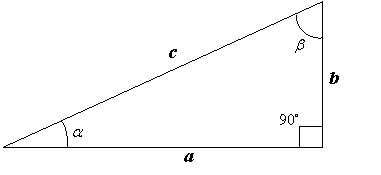PHYS 150 :: Physics Illinois :: University of Illinois at Urbana-Champaign
Core Math
Scientific notation
This course will take us from the scale of atoms to that of the universe. Along the way we'll encounter many numbers that are much larger are smaller than those from everyday experience. When dealing with very large or very small numbers, it is much more convenient (and takes a lot less typing) to use scientific notation. Scientific notation takes the form ![]() and the rule is quite simple:
and the rule is quite simple:
- If n is positive, move the decimal point n places to the right.
- If n is negative, move the decimal point n places to the left.




Algebra
We will use the following notation:
![]() means "x plus y"
means "x plus y"
![]() means "x minus y"
means "x minus y"
![]() means "x times y"
means "x times y"
![]() means "x divided by y"
means "x divided by y"
![]() means "x to the y power" or "x times itself y times"
means "x to the y power" or "x times itself y times"
Example:
![]() means "the square root of x" and
means "the square root of x" and ![]()
Geometry and Trigonometry
The figure shows a right triangle. It is a right triangle because one of the angles is ![]() The other two angles are
The other two angles are ![]() and the sides have length a, b, and c.
and the sides have length a, b, and c.

We have the following relationships:
Pythagorean Theorem: ![]()
Sine is opposite over hypotenuse: ![]() and
and ![]()
Cosine is adjacent over hypotenuse: ![]() and
and ![]()
Tangent is opposite over adjacent: ![]() and
and ![]()
Prefixes
When discussing big or small numbers we'll sometimes use SI prefixes on units of measurement. Common examples include "kilometer" (instead of 103 meters), "milligram" (instead of 10-3 grams), "gigawatt" (instead of 109 watts), etc. I've listed them all below - we'll only need the first few rows!
| 1e-3 | milli- (m) | 1e3 | kilo- (k) | |
| 1e-6 | micro- (μ) | 1e6 | mega- (M) | |
| 1e-9 | nano- (n) | 1e9 | giga- (G) | |
| 1e-12 | pico- (p) | 1e12 | tera- (T) | |
| 1e-15 | femto- (f) | 1e15 | peta- (P) | |
| 1e-18 | atto- (a) | 1e18 | exa- (E) | |
| 1e-21 | zepto- (z) | 1e21 | zetta- (Z) | |
| 1e-24 | yocto- (y) | 1e24 | yotta- (Y) |
